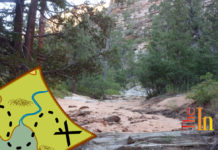 Getting on with the ONSHORE Act
Getting on with the ONSHORE Act
By Sen. Mike Lee
Oil is not yet associated with Utah the way it is with states like Texas or Alaska, but ever since the pioneer days, Utahns have known about the oil buried beneath our feet.
On July 11, 1847, less than two weeks before Brigham Young crossed into the Salt Lake Valley, Mormon pioneers discovered an oil seep. The incident is recorded in the diary of William Clayton, who wrote “during the day, some of the brethren discovered an oil spring about a mile south.” He later continued, “the ground is black [all] over with the oil … baked hard by exposure to the sun.”
The discovery of oil in 1847 was regarded as a great blessing, and indeed Utahns are still benefiting from that discovery more than 170 years later, as our houses are lit from the same reserves those pioneers used to fuel their stoves.
Today, Utah is a net energy exporter, as it has been for years. The hydrocarbon industry in Utah adds $20 billion to the Utah economy each year and supports more than 18,000 good-paying jobs.
But those are abstract statistics. What they mean in practice is that that industry helps build stronger families, schools, businesses, and communities. It means more good-paying jobs and a sense of purpose to thousands of people who might otherwise have very little opportunity — and very little hope.
But not everyone sees it that way.
I’m sure many of those activists in Washington, D.C. who are looking to keep Utah’s energy buried underground through cumbersome federal regulations are motivated by good intentions. But make no mistake, there is a very real cost to their agenda. It is a human cost as well as a financial cost.
Thankfully, the Trump administration has made it a point to clear away many harmful regulations as part of its “Energy Dominance Agenda.”
But there is an even more fundamental change that must take place if we truly want to unleash Utah’s energy potential: Namely, we need to decentralize control of energy from the federal government to the states.
Because at the end of the day, it is Utahns who get to live and work in this great state, and it should be Utahns who write the rules.
That is why I co-sponsored the ONSHORE Act. This bill would devolve control over the drilling application process to the states and would give states and tribes control of regulations for hydraulic fracturing. It would also give states’ permitting ability for oil and gas on federal land within their borders.
If the ONSHORE Act passes, it would protect and enhance the achievements of the past year and a half, and it would be one more dramatic step toward energy abundance and community security.
Articles related to “Getting on with the ONSHORE Act”
NAFTA needs strong intellectual property protections for America’s creators and innovators
The viewpoints expressed above are those of the author and do not necessarily reflect those of The Independent.
How to submit an article, guest opinion piece, or letter to the editor to The Independent
Do you have something to say? Want your voice to be heard by thousands of readers? Send The Independent your letter to the editor or guest opinion piece. All submissions will be considered for publication by our editorial staff. If your letter or editorial is accepted, it will run on suindependent.com, and we’ll promote it through all of our social media channels. We may even decide to include it in our monthly print edition. Just follow our simple submission guidelines and make your voice heard:
—Submissions should be between 300 and 1,500 words.
—Submissions must be sent to editor@infowest.com as a .doc, .docx, .txt, or .rtf file.
—The subject line of the email containing your submission should read “Letter to the editor.”
—Attach your name to both the email and the document file (we don’t run anonymous letters).
—If you have a photo or image you’d like us to use and it’s in .jpg format, at least 1200 X 754 pixels large, and your intellectual property (you own the copyright), feel free to attach it as well, though we reserve the right to choose a different image.
—If you are on Twitter and would like a shout-out when your piece or letter is published, include that in your correspondence and we’ll give you a mention at the time of publication.



